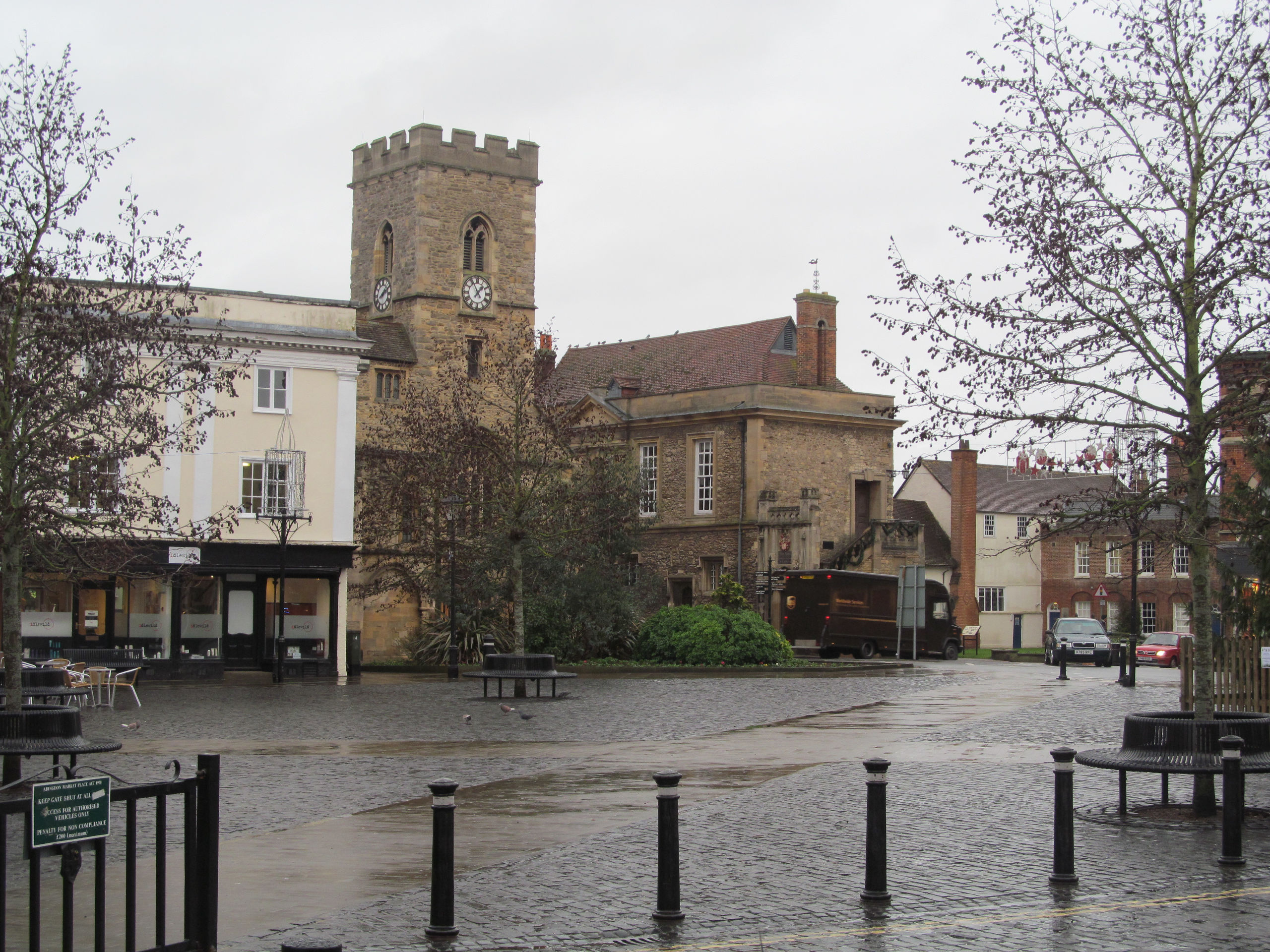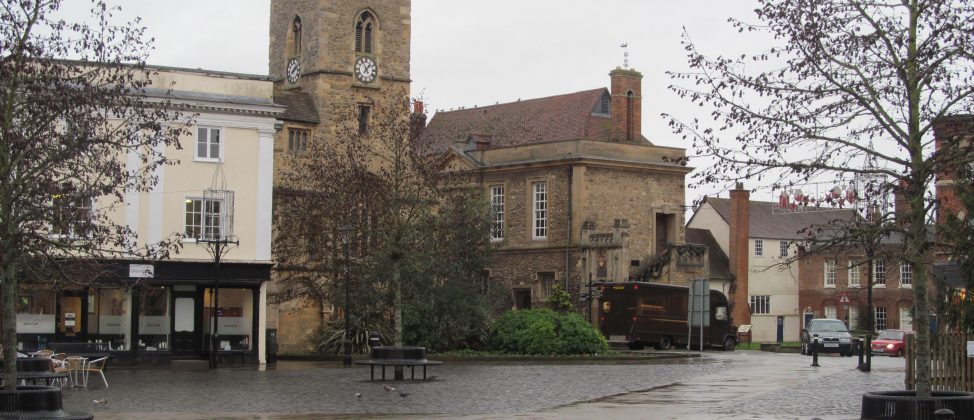Relations between Abingdon Abbey and the town of Abingdon were not always pleasant. Because the abbot functioned as the local lord for Abingdon and several villages in the area, the abbey was responsible for keeping the peace and collecting taxes. Several grievances which had been festering for years, particularly the erection of the Market House (New House) in the Market Square where the monks collected market tolls and fines, came to a head in 1327 during the rebellion of Queen Isabella and her supporters against King Edward II. Edward abdicated in January 1327 but civil unrest continued, including serious riots in the monastic boroughs of Bury St Edmunds and St Albans.
Initial unrest
On the evening of 20 April 1327, ‘All the township of Abendon, great and small, unanimously met together at the tolling of the common bell, in St Helen’s church’, possibly encouraged by agents of the queen. The discussion became heated – a particular cause of anger was the abbey’s market rights – and the crowd surged out of the church intent on destroying the market stalls and attacking the abbey. However, the monks were warned and the attack on the abbey was foiled.
Two days later, at midnight, St Helen’s bell once again summoned the townspeople to the church. This time they meant business. They organized into groups, each led by a captain, and at dawn they attempted to get into the abbey precinct via St Nicolas Church. However, the monks had had time to prepare and, with the aid of ‘certain seculars’, beat off the attack. The abbot advised reconciliation. The prisoners were set free and the ‘malefactors’ who gave themselves up were not punished.
‘The mob besieged the abbey in a warlike manner’
However, the townspeople were not pacified and sent to Oxford for assistance. On the night of 25 April the Mayor of Oxford led ‘burgesses and scholars’ through Bagley Wood to Northcourt, where they burnt the abbey tenants’ houses. They then proceeded to the Vineyard where they split into two groups: one group turned left along Radley Road, burnt the abbey farm at Barton and then went through the lay cemetery into the abbey precinct and thence to the main gate to let in the second group.
They entered the abbey, burnt buildings, and assaulted and beat the monks and abbey servants, killing some and imprisoning others until they had paid fines for their own release. They carried away chalices, vestments and ornaments of the church with other goods. Although many of the miscreants were unrecognized, about 80 names were recorded later. Among these were tradesmen of Oxford – bakers, butchers, chandlers, fishmongers, skinners, and taverners – in addition to the town clerk Thomas de Legh and the notary public Master Matthew de Alverchurch. There were also tradesmen and others from Abingdon. According to a report filed by the abbot in January 1328:
‘The mob besieged the abbey in a warlike manner, burnt the gates and certain of the houses within the abbey precincts, destroyed other houses of the abbot at Barton and Northcote, broke the walls of the abbey and the stalls (seldas) of a house of the abbot in Abingdon called Newhouse, dragged the timber of the stalls to the ground, and entering the abbey carried off plate vestments, and other church goods, together with divers charters, writings, and other muniments. They carried off the prior, Robert de Halton, who was then sick within the abbey, to Bagley Wood in Radley, and there threatened him with the loss of his head unless he did their will. They carried him back to the abbey, broke open the coffer containing the common seal and compelled him under fear of death to seal three writings obligatory, one: the convent was bound to them for £1,000; two: they were released and quitclaimed from all trespasses; and three: granted to the men of Abingdon the power to annually elect a provost and bailiffs for the custody of the town, together with the power to use the land opposite their houses towards the king’s highway through the town.’
Repercussions
In June 1327 protection was granted to the abbey for one year. The house had been so badly damaged that the monks had, for the most part, fled and were afraid to return. The sheriff was ordered to make a proclamation that the abbey was under his official protection.
By August, King Edward III appointed Gilbert de Ellesfeld and Thomas de Coudry to the custody of the abbey, which had been devastated by the rioters and consequently abandoned. The custodians were empowered to ‘arrest the malefactors who injured the abbey and hand them over to the sheriff’.
In November, Abbot John de Canynges was licensed ‘to receive goods such as chalices, books, vestments, ornaments, jewels, charters and muniments of which the abbey had been despoiled from certain of those who took them and from others into whose hands they had come’. A commission was issued to Fulk Fitz Waryn and others to do justice to those arrested and imprisoned for their share in the disorders. It was stated in the Close Rolls that the value of the spoiled goods of the abbey amounted to £10,000 (about £13.2 million today).
Three years later, in 1330, the last of the trials from the riots were still going on. A writ of aid was issued to Robert Marye and Richard Peper for ‘conveying John le Spicer and five others, all of Abingdon, to Windsor Castle, indicted for diverse felonies and trespasses at Abingdon Abbey during the riot’. As these men were never returned from Windsor and there are no subsequent records of them, we can only assume that they were those who were executed for the 1327 riots against Abingdon Abbey.


